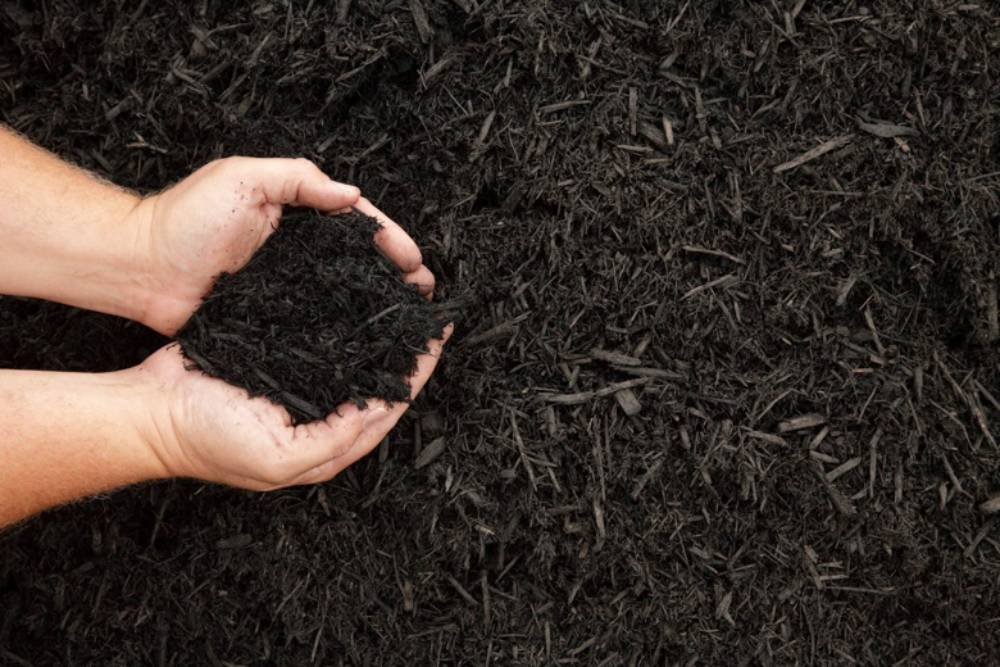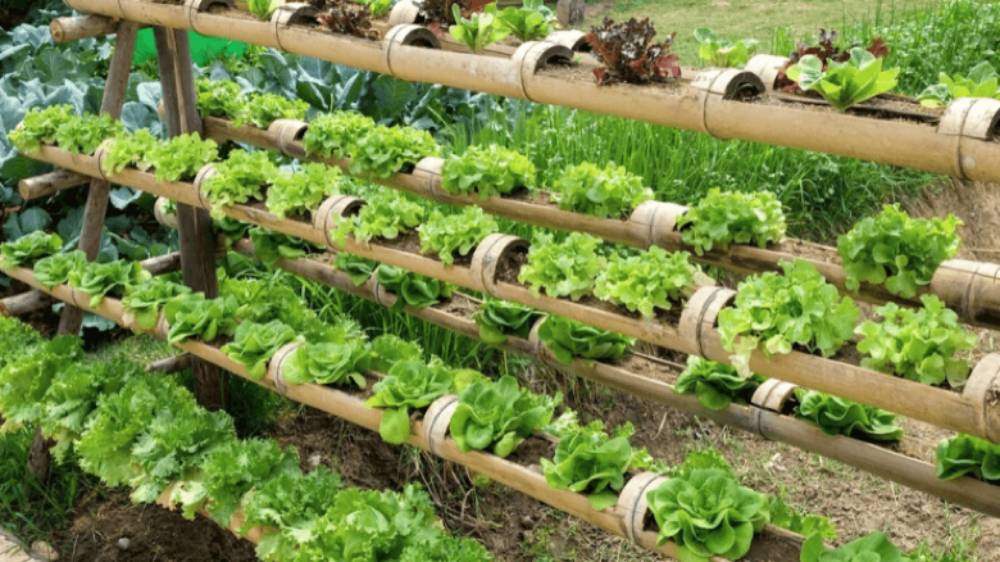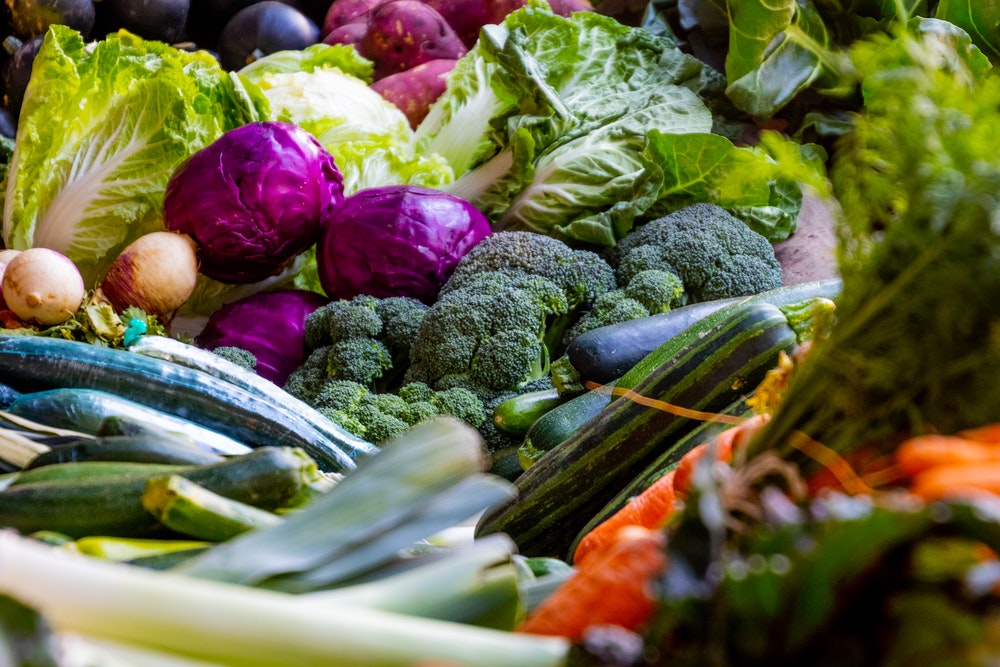Organic gardening refers to grow fruits and vegetables organically without the influence of artificial chemicals. It gives you peace of mind and internal satisfaction of knowing what you are actually eating. Organic foods are free of fertilisers, human-made chemicals, and nasties. Organic gardening brings the tastiest and freshest food possible.
According to the 21st edition of the study “The World of Organic Agriculture“, published by FiBL and IFOAM, organic farmlands have increased by 2 million hectares across 186 countries. Also, there are a number of international organisations supporting organic farming.
Benefits Of Growing An Organic Vegetable Garden
Before we start on the ways of cultivating organic vegetables in your small garden, let’s go for a brief discussion on its benefits.
Health
Organic vegetables are free from toxic components, and are high in mineral and vitamin content, and are grown in the absence of herbicides and pesticides in their cultivation cycle.
By growing your own vegetables, you are assuring the health of your family. Also, you will have an additional benefit of routine workouts from plantation to harvesting. It will help to cut off extra calories.
Taste
Although many vegetables may not have that look which you purchase from the market; however, they are superior in taste. For most of the veggies, they don’t need to be cooked; just get it picked straight to your serving platter.
Cost
Buying organic products from the farmer’s market are expensive. Cultivating food in your garden can save you up to 50% of your money. Moreover, savings can help you to expend your garden that lasts long, even in winters, without any requirement of buying from the superstores.
Environment
As organic gardening is free of harmful chemicals, pesticides, fertilisers, and herbicides, no by-products are running out of your drainage into the environment.
Thus small birds, insects, and animals will not be affected. Moreover, organic gardens are made up of organic soil, so there is less erosion, which positively impacts the entire area. By putting organic waste into fertilisers can help to relieve landfill spaces as well.
Mental
Being in a garden can ring you closer to Mother Nature and help you stay calm and positive. It has significant effects on the body and mind both. It’s a kind of meditation that ring satisfaction of achievement and internal peace seeing your plants growing.
Tips To Cultivate Organic Vegetables In Backyard Garden
As we have already shown up some brief benefits of organic gardening, below are some useful tips to keep you informed on healthy soil, good site, sustainable resources, and bio-diverse components by avoiding chemicals.
Starting An Organic Garden For Beginners
Organic gardening needs you to know how to strengthen plants naturally and utilise alternative ways to keep pests away.
Also, cultivating vegetables doesn’t mean that you cannot enjoy flowers. You can indeed plant them to attract pollinators and make your garden look better. Moreover, to get the best-grown veggies, make sure to get the best fertiliser.
Prepare Soil For Organic Vegetables
Healthy soil comprises a good structure, filled with nutrients, and a smooth texture is essential for organic gardening. It absorbs water well and encourages the healthy growth of plants.
Make your soil with the compost of leaf mould or rotten manure. These materials are bulky and improve soil condition by releasing nutrients slowly and stimulating microbes.
Use the no-dig method as it allows microbes to increase soil’s health. It aims to cover the soil with rich organic composite and prevent weeds growth. It is the best method for smaller gardens and raise-beds.
Make Your Own Organic Compost And Mulch to Fertilise Organic Vegetables
As I said above, decayed microbes are the most essential component of organic soil. Reduce weeds by spreading a layer of mulch around 2 inches in height. It serves as a defensive end against weeds and prevents sunlight from reaching them for germination.
Moreover, mulch is excellent in preventing fungal spores from growing on the leaves of the plant. You can use newspaper, cocoa hulls, and weed-free straws as mulch to add advantage to your organic soil.

Choose The Right Spot For Your Organic Garden
Go for a site that gets at least eight hours of sunlight every day. Most vegetables need a fair amount of the sun for photosynthesis. Have a well-drainage place and level-height for plantings.
Get windbreak walls or hedging to save plants from wind. Plant those veggies that are useful and quickly harvested to get easy results—lastly, be realistic on how much amount you can mage to produce.
Choose The Right Plants For Your Region And Conditions
Before start planting vegetables in your garden, it is recommended to research gardening tips and find out those types of vegetables and their variants that can be cultivated well under your growing conditions.
Keep the amount of sunlight, rainfall, and weather conditions in mind for choosing your seeds. Get advice from local gardeners or farmer’s market personals to get insight on those seeds that work best in your local site. Study about their watering needs and seasons so you can know which one is worth investing in.
Plant Flowers To Attract Bees And Pollinators
Planting flowers help attract pollinating insects like lady beetles, bumblebees, and praying mantis to your organic garden. They also chow down harmful insects and prevent plants from a bad attack.
These flowers include; marigold, cosmos, nasturtium, salvia, bachelor’s button, daisy, purple coneflower, black-eyed susan, zinnia, sunflower, yarrow, and cleome.
Take Care For Plants When Organic Gardening
It is recommended to walk through your garden once weekly and check for any shed foliage. Many diseases spread quickly in fallen dead foliage. Do it more often if possible.
An entire plant disease can be prevented by removing just a single infected leaf. Also, do not discard your infected leaves into the compost pile; make sure to throw them in the trash.
Purchase Seeds Or Starter Plants From Reputable Sources
Make sure that you get seeds from a certified organic seed seller or from starter plants that were grown without chemicals and pesticides.
There are a number of nurseries that have a good collection of a healthy organic selection of seeds. Moreover, a local farmer’s market can serve as a good source of certified seeds or starter plants for your home garden.
Plant Heirloom Varieties When Possible
Heirloom veggies are traditional and are rarely found after the growth of current hybrid variations. Despite the fact that present strains are more disease resistant, easy to breed, and long-lasting, old-fashioned heirlooms still have some dominating benefits.
They are more nutritious with exceptional taste and are cost-effective. Their seeds can be saved for an entire year from the first harvest to the next one, which cannot be done with hybrid seeds.
Use Companion Planting Principles In Your Garden
Some plant combinations work best and give a synergistic impact on cultivation. Plating compatible herbs and vegetables in combination can produce high yields, minimise diseases, deter insects, and improves taste. Also, there are some combinations better to avoid. Therefore, check for your best companionship and go for a rocking harvest.
Use Raised Beds To Extend The Growing Season
Raised beds are great for growing veggies with rich organic soil and extending their growing season in a meaningful manner. Raised soil beds can be warmed quickly in spring, and it is easy to harvest weeds at a high-level then bend down to ground level.
Please make sure your wooden sides of raise beds are free of wood treating chemicals such as pressure-treated wood planks.
Use Vertical Gardening Techniques
The vertical gardening technique is an ideal way when you have a small space as it maximises your growing area. It improves circulation that helps prevent diseases by keeping plants off the ground.
There are cages, trellises, string, and other types of supportive tools to get your plants to grow, thus provide more space in a small area.

Rotate Crops From Every Year
Crop rotation is a useful technique that helps to reduce diseases and pests. It is a common phenomenon used by farmers to avoid the depletion of soil for nutrients. It is recommended to practice crop rotation in your home garden to keep them safe and healthy. Hence, avoid planting the same crop at the same spot every year.
Easiest Vegetable To Grow In A Small Space
Please keep in mind that organic gardening is not for people seeking perfection – you may need to accept imperfect looking vegetables and odd leaves. Below are some excellent suggestions to easily grow edible vegetables in small spaces.
Cherry tomatoes
According to the survey conducted by assignment assistance, cherry tomatoes are the topmost organically grown vegetable in small gardens. The quick-growing cherry tomatoes can be harvest within 2-3 months of planting.
Take high-quality seeds from the best source and cultivate them in large containers or even garden beds after the spring frost is passed.
Bush beans
Bush beans can go from germination to harvest in around 50 days. They love warm weather and warm soil so plant them in spring. Sow them 2 inches apart in 18 inches apart rows after the last frost. They grow well into thin 6 inches bush beans.
Peas
Peas are spring buddies, and you can easily cultivate them. Sow peas in early spring about 4-6 weeks before the last frost, or else you will lose enrich the soil. Sow them two inches apart in double rows that are 6 inches apart. You can also use hang netting or pea trellis for high yield.
Summer squash
Summer squash plants are always more than you can eat. Sow them directly into a bed that is amended with manure after the last frost of the spring. Once the fruit begins to rise, harvest them for yummy taste and brilliant quality. Pick 3 inches diameter fruit for round varieties and 6 inches for zucchini.
Cucumbers
One of the best ways to cool down your summer heat is to handpick freshly grown cucumber from your home garden and eat it. They are summer plants, and you can seed them directly into containers or garden beds after last spring frost. Please give them a fair amount of water and compost to get the juiciest and yummiest cucumbers.
Garlic
Garlic takes a long time from seeding to harvesting. They are “plant it and forget about it” kind of veggie. Tuck individual garlic clove in mid-autumn and harvest it in mid-summer.
They can grow well in regular soil of the home garden. It is recommended to plant garlic purchased from farmers market instead of a supermarket to avoid chemicals and pesticide impact.
Leaf lettuce
Similar to other fresh green veggies, leaf lettuce is easy to grow. They can be sown directly in mid-spring in a 6 inches wide garden bed band. It would help if you kept them moist until the plants are grown.
You can also plant them in containers or in a fabric grown bag. When they are raised 4 inches as baby greens, then you can pick them. Also, their centre will continue to grow to prolong the harvesting of the lettuce.
Encourage Biodiversity For Easier Organic Gardening
To make nature work for you, encourage food chain balance with biodiversity. Plant right coloured flowers to attract a variety of pollinators. The more bees attracted, the larger yields you will have. Utilise biological controls for pests and keep watering logically. Don’t hurt your veggies with over watering as it will make them stressed and vulnerable.
Conclusion
I hope that the above information will be beneficial for the readers, and beginners, especially vegans; now have handy pro tips to start their beautiful organic vegetables garden soon. I recommend planning everything efficiently to save yourself from the hassle and financial loss. Start small and grow smartly. Best of luck!
Author Bio
Samantha Kaylee is currently working as Assistant Editor at Crowd Writer, where students opt for their do my coursework UK requests. She has a beautiful organic home garden and loves cultivating food. Samantha is a fitness freak and practice yoga. You can go through her online blogs for more exciting knowledge.






